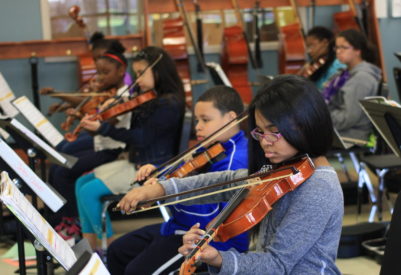
ScholarshipChip recommended 10 Reasons Why a Truancy Intervention Program Can Help Students which are:
There’s no reason why a truant student should be left by the wayside. Let’s look at 10 reasons why a truancy intervention program can help your students.
A truancy intervention program (TIP) is a program that’s designed to support students who are habitually truant. TIP works with the student’s parents or guardians, teachers and other school staff, social workers, and others in the community.
1. TIP intervenes early. At-risk students can be identified and monitored, particularly important early in their education. Attendance problems and truancy usually begin in the elementary grades. When these are addressed before they can escalate, behaviors and attitudes toward school can often be changed before they worsen. Home visits and outreach to the parents when minimal unexcused absences are involved, enabling family engagement early on.
Interventions should address the root causes of the truant behaviors such as reading difficulties or physical or mental health issues. Early childhood education and early literacy development can be introduced.
2. The program promotes attendance. The student is matched with a volunteer mentor who visits them several times a week in school. The mentor monitors the student’s daily attendance, performs in-school tutoring, acts as a positive role model, helps with goal setting and achieving, communicating with school staff and social workers.
3. A truancy intervention program promotes student health. Because poor health is often a barrier to attending school, the student is encouraged to engage in healthy behaviors involving personal hygiene to prevent common illnesses. The student’s health should extend to access to a school-based health center for screenings and free medical services.
4. A TIP reduces barriers to learning. Barriers to learning can include class instruction moving too fast, health problems, or an inability to find help. Students may not receive appropriate support from home or even within the classroom environment. Your school needs to provide a positive environment where the student can feel safe and engaged. This includes having a positive school climate if the student feels the current one is negative.
5. A truancy intervention program engages students in learning. When the student has a multifaceted support system in place from teachers, administrators, parents, and their surrounding community, they become better engaged. They have the feeling of being cared for, resulting in better learning.
6. A truancy intervention program helps students achieve. With truant students off the streets and in a positive learning situation with caring people, they can achieve their goals and become productive members of society. Students make short- and long-term goals that help them achieve, whether it’s getting to school, passing a class, moving on to the next grade, or graduating from high school.
7. A TIP provides support when needed. This includes support from social workers, counselors, school nurses, and school psychologists. Community partners like faith-based communities, law enforcement, after-school or recreation programs can become involved. Proper support can eliminate the barriers to learning and provide the positive support the student needs.
8. The TIP drives child and family relationship building. As part of the family outreach, home visits are used for relationship building and problem solving. The TIP would establish a contact person at school for parents to work with. It can refer students to counselors and conduct workshops for the family. If needed, a truant officer can be used to work with the student and their family.
9. The truancy intervention program addresses diversity. The program works to support students and families from numerous diverse backgrounds. With the increase in minority populations, TIPs are now addressing these families on a growing basis.
10. A truancy intervention program promotes a safe school environment. The school that creates a positive and supportive environment reduces the prevalence of challenging, dangerous, or disrespectful behaviors. For students who are truant because of bullying or the fear of violence toward them, a TIP works to alleviate that student’s fear to return them into a safer school environment.





